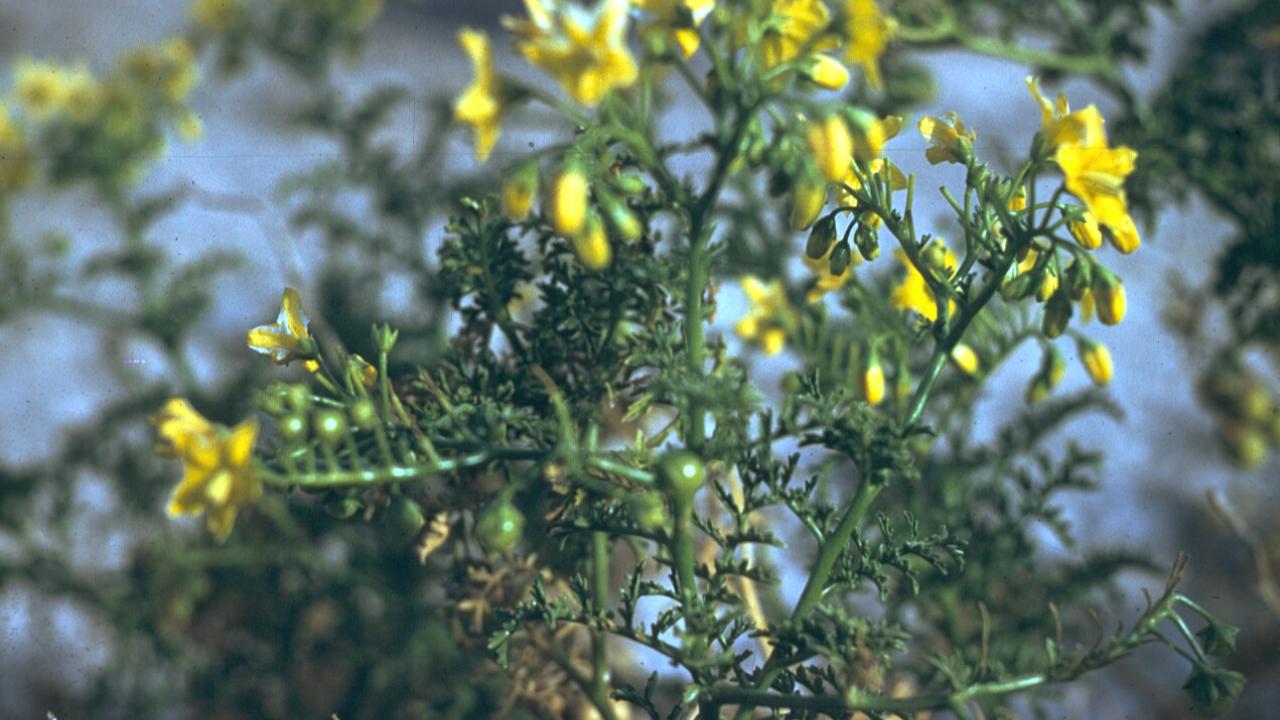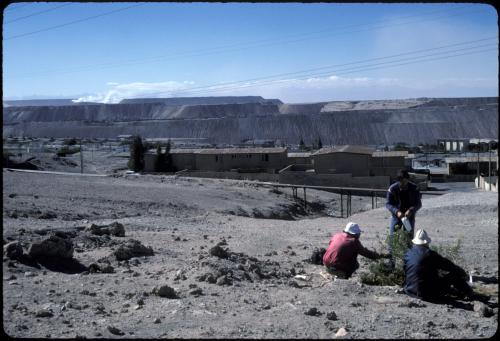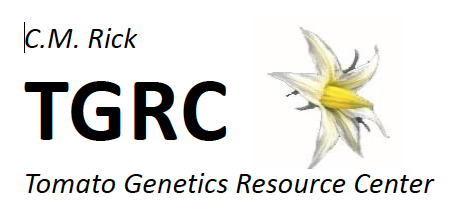
Charley Rick and his Namesake Desert Nightshade
The wild nightshade Solanum sitiens, formerly S. rickii, is endemic to the Atacama Desert of Chile, among the driest places on Earth. This well-adapted xerophyte was collected by Charley Rick in 1957, and described by Donovan Correll in 1961, who named it "S. rickii" to recognize Rick and his contributions to tomato genetics. In a letter to Correll, Rick joked that "As for the name I feel highly flattered, but with such a binomial it could never be a valid species." Correll was a recognized authority on Solanum -- he authored "The Potato and its Wild Relatives" -- but was unaware that this particular species had already been described and named S. sitiens, Latin for "thirsty nightshade", by Ivan Johnston in 1929. Coincidentally, both Rick and Correll studied plant taxonomy under Johnston as graduate students at Harvard! Since Johnston's paper appeared first, his name S. sitiens had precedence, and is now the one in use. So contrary to Rick's predictiong, the species has proved to be valid -- indeed a very interest one -- although the name honoring him was short-lived.
Although his name for this species did not last, Correll made another, more enduring contribution to tomato genetics. In 1958, Correll and Earl Smith discovered by happenstance a plant of an unidentified wild tomato growing near Atico, Peru, which Correll went on to describe as S. pennellii. He sent seed samples of his collection to Rick, whose studies revealed numerous advantages for genetics research, including self-compatibility, genetic uniformity and easy hybridization with cultivated tomato. These characteristics have proved so useful that Correll's collection -- known as LA716, or simply 'Atico' -- has become the single most popular stock maintained by the TGRC, requested by dozens of researchers each year, and has contributed several important economic traits, including Fusarium race 3 resistance and fruit sugar content, now widely deployed in commercially grown tomato varieties.
For more information on the ecology of S. sitiens and a newly released library of introgression lines representing its genome in cultivated tomato, click here.

Correll, D. S. (1961) New species and some nomenclatural changes in Section Tuberarium of Solanum. Wrightia 2: 169-197.
Correll, D. S. (1962) The potato and its wild relatives. Contributions of the Texas Research Foundation, Botanical Studies, Vol. 4. Renner, Texas.
Johnston, I. M. (1929) A new Chilean plant and some nomenclatural changes. Revista Chilena de Historia Natural 25-27.
